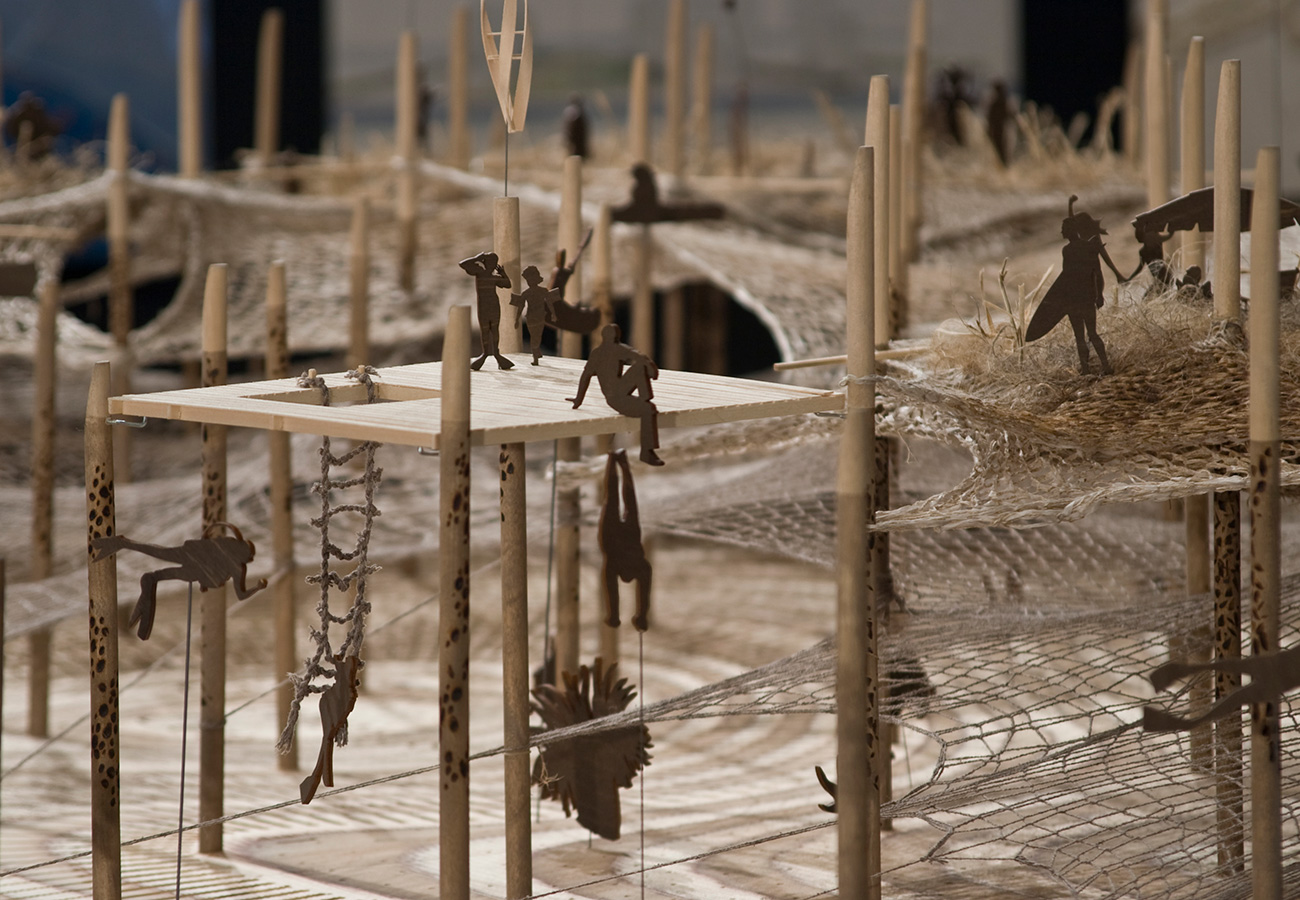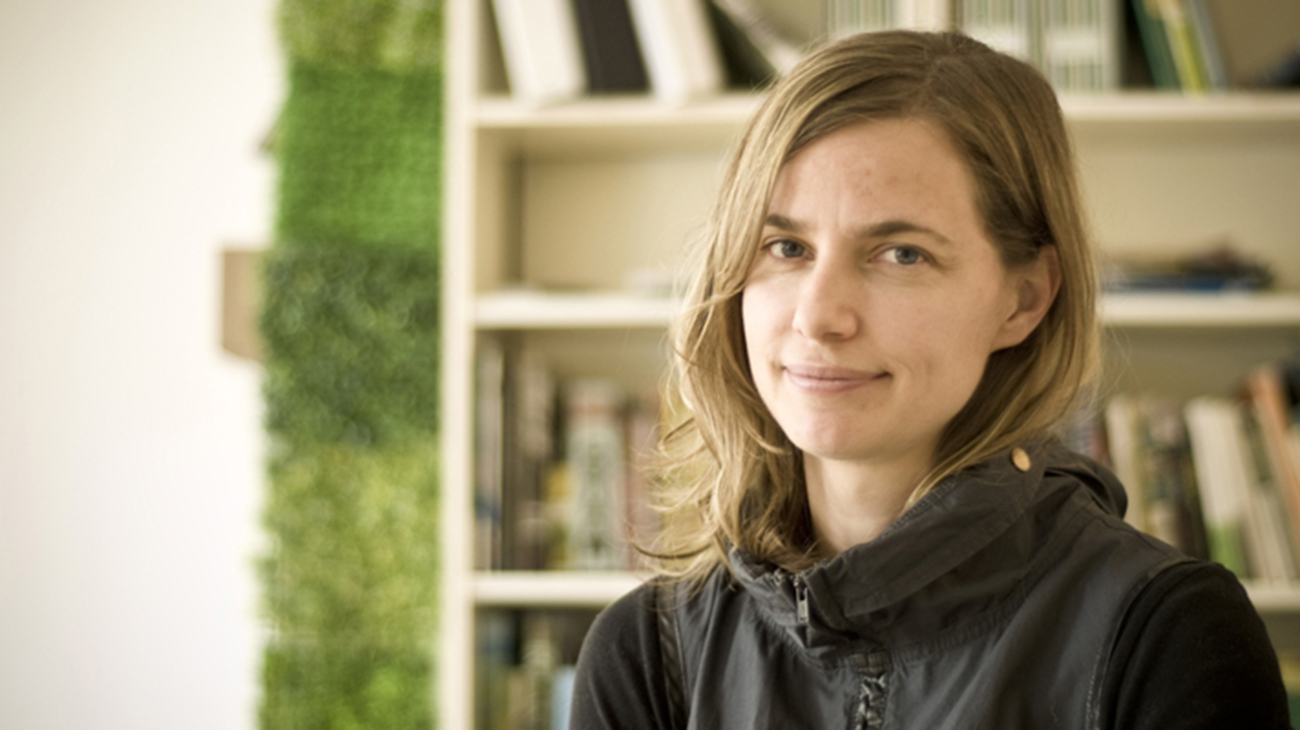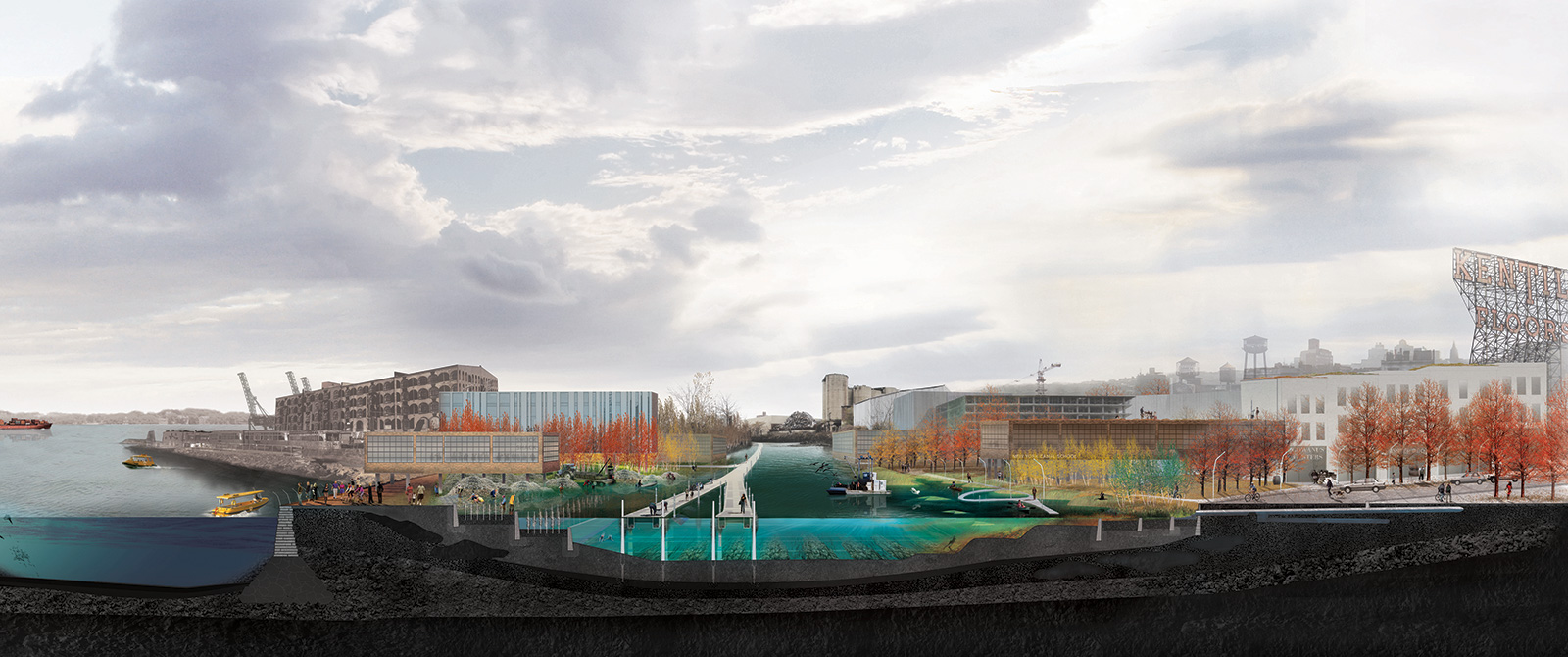SCAPE / Landscape Architecture interview
Kate Orff of SCAPE / Landscape Architecture sits down with the League to discuss her work and the intersection of design and environmentalism.
An interview with SCAPE / Landscape Architecture, a 2012 Emerging Voice.
A landscape architecture and urban design firm, SCAPE / Landscape Architecture is “committed to the … creative design and construction of the joint urban-natural environment.” Led by Kate Orff and Elena Brescia, the New York-based firm engages both built landscapes and research projects. Recent work includes landscape designs for Milstein Hall at Cornell University, the Austin Nichols Warehouse on the East River Waterfront, and the 103rd Street Community Garden for the New York Restoration Project; and the study “Oyster-tecture,” for the Museum of Modern Art’s Rising Currents exhibition.
*
Anne Rieselbach, The Architectural League: As an emerging firm, what do you see as the advantages and challenges to practice in today’s economic, professional, and intellectual climate?
Kate Orff: I think one of the greatest challenges, especially operating in America relative to places in Europe or other parts of the world, is that because America is so profit-driven, corporations are so often setting the agenda. This is incredibly problematic for me since what I’m trying to do is operate at the same time as a landscape architect and a community organizer at the neighborhood level—too often the individual profit motive trumps the idea of doing the right thing.
But what’s great is when profit motives and what is the right thing to do converge. For instance, when I was doing research for this MoMA exhibition [Foreclosed: Rehousing the American Dream] with Studio Gang, I found myself really emphasizing the idea of the neighborhood, because people can really attach themselves to the idea of a neighborhood, in ways that they simply do not with technical terms like ‘low-rise, high-density’ housing. There was a survey done by the National Association of Realtors—this super-conservative power group—which found that Americans overwhelmingly said that they would rather live in neighborhoods than in single-family, detached, suburban homes. I think this can be incredibly instructive to how we approach design, how it can evolve to incorporate the interest people have in wanting to live together and wanting to create connections in their lives. And here, made possible because the ways in which people actually want to live are converging with the profit motives associated with a well-formed, densified neighborhood.
Rieselbach: Speaking of urban landscapes, last year you had three projects simultaneously under construction, including the Community Garden in Harlem and the Battery Park Community Center. Have they influenced how you approach the more conceptual, often larger scale research projects?
Orff: One thing I have learned with each built project is the importance of a really strong design concept, so that in effect, it becomes almost foolproof to build. The idea or gesture has to be so strong and so clear that it can withstand being “stripped” during the process of value engineering. If you rely too much on a certain detail—the texture and color of a certain stone, for example—you risk losing the entire thing in a single cut to the budget.

SCAPE / Landscape Architecture | Oyster-tecture, Soft Infrastructure, Brooklyn, NY, 2009. Image courtesy SCAPE / Landscape Architecture
So having a really robust and nuanced sense of the design from the outset, that can guide the project through is incredibly valuable. And I think that is really instructive with these larger-scale research projects.
For example, with our Oyster-tecture project for Rising Currents, there you had a really extensive research project with many, many facets that had to be distilled many times in order to be understood by someone in the span of one minute. It was a really tough editing process because it was taking months of work and just throwing them on the floor, but in the end, I felt like this stripping process was possible because the core idea was there underneath. More and more I see my role in the office to be to set out this initial vision or gesture and then work with everybody in the studio to really refine and develop.
Rieselbach: As you’ve described your work, it takes many forms. Could you talk about the inner relationship between your academic work, your teaching, your research projects and your design practice?
Orff: There are many, many ways to be efficacious and to participate. Designing built projects is one way of doing that, but designing something at a site scale can also be very limited in its effects to the site; so some of the projects, like Safari 7—that was with Jannette Kim and Glen Cummings—constitute a way of working very fast in this big, urban scale with volunteers and students to make a project that’s more about the way that people see the city, rather than working on a specific built intervention. That was a great way for us to engage all kinds of issues that we weren’t really able to do at the scale of a small site work.
Rieselbach: This series emphasizes the voice of practitioners: how would you describe your voice?
Orff: I think the idea of the voice is really important, because the concept of voice implies perspective; it implies differentiating; it implies values. I believe my voice has been to reflect on landscape architecture more broadly—not just providing services for the design of exterior spaces—but as a way of thinking about the world, and a way of intervening in the world relative to larger questions of global climate change and sea-level rise and the loss of habitat. On the one hand, landscape is this very interesting and powerful way of operating in the world of analyzing—trying to make connections between things that are often separate, such as science, design, engineering and the arts.
I hope that my voice in landscape has been one of synthesis; of one that’s been trying to pull together all of these different and disparate entities towards a more coherent, conceptual, and positive reading of place and of landscape in the world.
On the other hand, I’ve always thought about this notion of landscape as a unit of culture and a unit of space that has a lot of potential in terms of making change. The architect works at the scale of a building, but a landscape architect always works at the scale of a collection of buildings or else a neighborhood or regional scale. It’s really at that level which we can begin to imagine a stronger impact on the environment, not necessarily these kind of singular units of behavior, but rather operating more collectively and cohesively. Landscape is a unit that people perceive collectively—like where you grew up, the landscape of the Appalachians, the landscape of the Lake District—it’s really something that people identify with culturally and personally and emotionally. In the end, this is what makes landscape so powerful, since thinking and talking about it more broadly can begin to pull people together and inspire them to work together to make change.
Rieselbach: Your projects really have a didactic quality to them in many cases. In what ways does community engagement shape your work, and is it a catalyst or a goal? What role can experiencing your work, research projects, or the constructive landscapes have in heightening interaction with and perceptions of the contemporary landscape?
Orff: To me, the issue of community engagement is so critical because in this era of slashing and burning public programs, there has been a declining investment in the public. If a community wants to make change in their environment, they’re going to have to band together and do it themselves, and I feel that we as designers can and should play a role in facilitating that. With the 103rd Street Community Garden in Harlem, the New York Restoration Project had already done quite a bit of community programming and outreach so it was perfectly clear from the outset what was going to make this a successful park. And it is successful; there are so many different reasons to go—there are grandmothers meeting in the park, high-schoolers on the basketball court, toddlers on the playground, family’s barbequing—it’s providing a way for multiple people to be able to interact and use the same space at the same time.
And then in our Oyster-tecture project for Rising Currents at MoMA,we worked with the community in a different way, by providing an interface for different community groups who wanted to create positive change in their neighborhood. The idea was to nurture an active oyster culture in the area around Red Hook and the Gowanus Canal where millions of gallons of harbor water could be cleaned through natural biotic processes. Through our pilot project we were able to provide a channel and a means of organization for some of the incredible energy that already exists in those communities. I think that was our most important contribution.
Rieselbach: Yes, in a way, this brings me to my last question, which is: how do you think design can ameliorate the negative effects of human impact on the environment?
Orff: We are living now in a world that we have made as humans, and to me, that’s a very significant situation. Every square inch of the planet, to some degree, has been transformed by human hands: even in presumably the most remote places, out in the middle of the Pacific Ocean, there’s the Pacific Gyre, a garbage patch roughly the size of Texas. In these areas “outside” of human habitation, we have melting ice, we have plastic patches, we have wastelands. As a landscape architect, it’s very clarifying, because you’re working in a world that has been made and remade many times over, and so it’s not our role to “preserve” nature or to “mediate” between people and nature—it’s all people. That’s why I say “nature is a design issue,” because there is no “pure nature” that’s outside of us that exists, untouched, up in the foothills that we can calibrate our relation to. We’ve “made” it already, so now we need to take a very, very strong hand in remaking. I never use the word restoring, but I think you need to design your projects so that you can make a foothold for other species and ecological processes to exist.
The remaking of the American landscape is the topic of my new book, Petrochemical America. It visualizes the interrelated processes and systems that support American consumption and settlement patterns. When I think about how profoundly and suddenly we have transformed the landscape in the past 100 years during oil’s heyday, it’s daunting – but also challenging and inspiring to try to think about the magnitude of vision for change towards sustainable development that marks massive shift in the agenda as we shape the next century. In the book, there’s also a Glossary that shines a spotlight on how groups, individuals, and agencies are organizing to make change. That’s what is inspiring me and motivating me moving forward.
All images courtesy of SCAPE. Interview conducted on March 9, 2012.
Explore
Farshid Moussavi: Style Matters
Farshid Moussavi presents six projects that illustrate the subversion of architectural conventions.
Horizontal light: Lewerentz, Aalto and the Nordic landscape
Thomas W. Ryan explores the seminal works of Alvar Aalto and Sigurd Lewerentz in Sweden and Finland.
Anmahian Winton lecture
A 2016 lecture by Alex Anmahian and Nick Winton.


